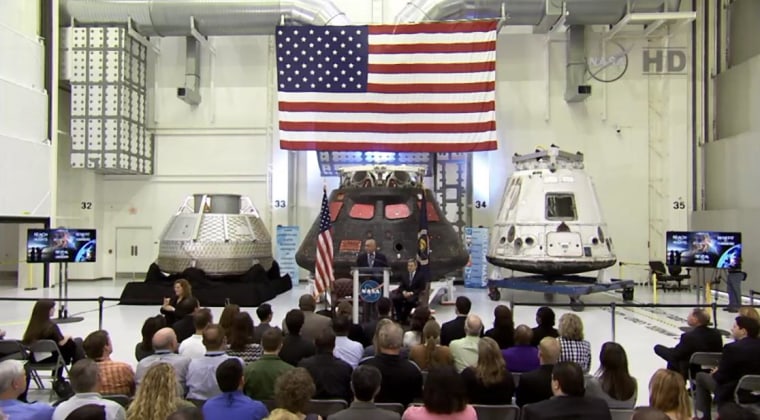The White House budget proposal for NASA in 2016 calls for a $500 million boost over the 2015 enacted budget and would keep NASA on its path to Mars, NASA chief Charles Bolden says.
The $18.5 billion budget request, presented by Bolden Monday (Feb. 2), includes funding for developing a mission to Jupiter's moon Europa, and the agency's asteroid redirect mission (ARM). Officials think ARM could help pave the way for crewed missions to the Red Planet by the 2030s.
"NASA is firmly on a journey to Mars," Bolden said. "Make no mistake, this journey will help guide and define our generation." [Red Planet or Bust: 5 Manned Mars Mission Ideas]

The new fiscal year 2016 budget, if enacted as it stands now, doesn't come without sacrifice. If the budget request proceeds as is, NASA is planning to end the long-running Opportunity rover's mission on Mars next year. Officials with the space agency cited Opportunity's "signs of age, including recent problems with its flash memory," as cause for ending its operations. Opportunity has been roaming the surface of the Red Planet for more than 10 years.
The NASA budget request would also end operations for the Lunar Reconnaissance Orbiter (LRO for short). LRO has been orbiting the moon since 2009, helping scientists learn more about lunar water and map the lunar surface.
NASA's Orion spacecraft program — designed to bring humans to deep-space destinations like Mars — and Space Launch System mega-rocket are also funded under the budget request. Orion is expected to receive about $1.1 billion for 2016, with the SLS receiving about $1.35 billion. Both programs are funded at lower levels than the budget enacted in 2015.
On the whole, Bolden sees NASA's future as bright.
"That the idea we’re adrift is an empty hook trying to catch yesterday's fish," Bolden said. "I couldn't be more excited about our future. We're making steady progress and continuing to reach for new heights."
— Miriam Kramer, Space.com
This is a condensed version of a report from Space.com. Read the full report. Follow Miriam Kramer @mirikramer. Follow Space.com @Spacedotcom, Facebook and Google+.